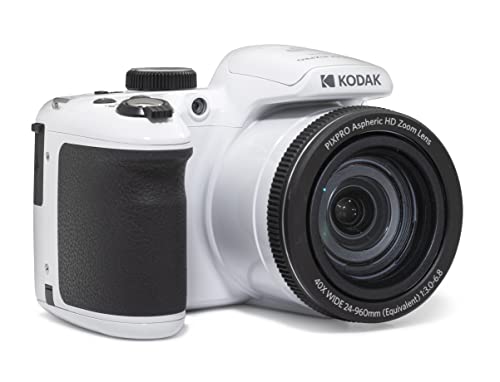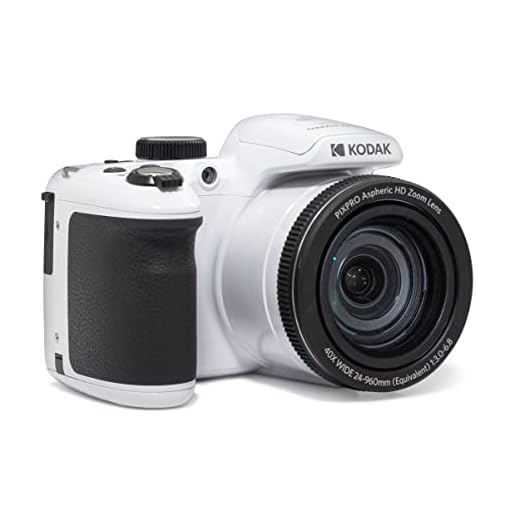


JPEG (Joint Photographic Experts Group) is a widely used image file format in digital photography and cameras. It is popular due to its efficient compression capabilities, which allow for smaller file sizes without significant loss of image quality. This makes JPEG ideal for storing and sharing images in digital cameras, as it helps save storage space and speeds up image processing.
One of the key reasons why JPEG is preferred in digital cameras is its compatibility with a wide range of devices and software. JPEG files can be easily viewed and edited on most computers, smartphones, and online platforms, making them versatile and convenient for photographers to work with.
Additionally, JPEG supports a range of color depths and resolutions, allowing photographers to capture and save high-quality images with ease. The format also offers the option to adjust the compression level, giving users control over the balance between file size and image quality.
Advantages of Using JPEG Format
There are several advantages to using the JPEG format in digital cameras:
1. Compression Efficiency
One of the key advantages of JPEG is its ability to compress image files without significantly compromising image quality. This allows for more images to be stored on a memory card or transmitted over the internet with reduced file size.
2. Wide Compatibility
JPEG is a widely accepted image format that is supported by a wide range of devices and software applications. This makes it easy to share and view JPEG images across different platforms without compatibility issues.
Efficient Image Compression
JPEG is widely used in digital cameras due to its efficient image compression capabilities. The JPEG format utilizes lossy compression techniques to reduce file sizes while maintaining a good level of image quality. This makes it ideal for storing a large number of high-resolution images on memory cards with limited storage capacity.
By compressing image data, JPEG files take up less space, allowing photographers to capture more photos without running out of storage space quickly. The compression process removes redundant information from the image while preserving important visual details, resulting in smaller file sizes without significant loss of image quality.
Benefits of JPEG Compression:
- Space-saving: JPEG compression reduces the size of image files, making it easier to store and transfer large amounts of image data.
- Efficiency: The compression algorithm efficiently reduces file sizes while maintaining acceptable image quality, balancing storage space and visual fidelity.
Compatibility with Digital Cameras
JPEG format is widely used in digital cameras due to its compatibility with various devices and software. Most digital cameras support JPEG as the default image format, making it easy for users to capture and share photos without the need for additional conversion or editing.
Furthermore, JPEG files are relatively small in size compared to other image formats, allowing digital cameras to store more photos on memory cards. This efficient use of storage space is essential for photographers who need to capture a large number of images without constantly changing memory cards.
Benefits of Using JPEG in Digital Cameras:
- Compatibility with a wide range of devices and software
- Efficient use of storage space
- Easy sharing and printing of photos
Lossy Compression for Smaller Files
JPEG is a popular image format used in digital cameras because it employs lossy compression techniques to reduce file sizes without significantly compromising image quality. Lossy compression works by discarding some of the image data that the human eye is less likely to notice. This allows for smaller file sizes, making it easier to store and transfer images.
How Does Lossy Compression Work?
During the compression process, JPEG algorithms analyze the image and remove unnecessary or redundant information. This can include color data that is not easily visible, high-frequency details that are not crucial to the overall image, and other non-essential elements. By discarding this data, JPEG files can be significantly reduced in size.
Trade-offs of Lossy Compression
While lossy compression helps create smaller files, it can result in a loss of image quality. As data is discarded, the image may exhibit compression artifacts such as blurring, blocking, or color distortion. The degree of compression and resulting loss of quality can be adjusted by choosing different compression levels when saving JPEG files.
High-Quality Image Output
One of the key reasons why JPEG is used in digital cameras is its ability to produce high-quality images with relatively small file sizes. JPEG compression allows for a good balance between image quality and file size, making it ideal for storing images captured by digital cameras.
When a photo is taken with a digital camera, the image is initially captured in a raw format, which preserves all the details and colors of the scene. However, raw images are typically very large in size, making them impractical for storing and sharing. By converting raw images to JPEG format, digital cameras are able to compress the image data without significantly compromising the overall quality of the image.
JPEG compression works by analyzing the image and discarding non-essential visual information that the human eye is less likely to notice. This allows the image to be compressed into a smaller file size while still maintaining a high level of visual fidelity. As a result, JPEG images produced by digital cameras are suitable for various applications, including online sharing, printing, and viewing on electronic devices.
Support for Millions of Colors
JPEG format is widely used in digital cameras because it supports millions of colors, making it ideal for capturing and storing high-quality images. This color depth allows photographers to reproduce vibrant and detailed images with a wide range of shades and tones.
In digital photography, having support for millions of colors is essential to accurately represent the colors in a scene and ensure a lifelike reproduction in the final image. The JPEG format’s ability to handle a vast color palette makes it a popular choice for photographers looking to capture the nuances and richness of color in their photos.
Standard Format in Photography
JPEG, or Joint Photographic Experts Group, is a widely used standard format in photography. It is the preferred format for digital cameras due to its efficient compression algorithm that allows for high-quality images with relatively small file sizes. This makes it ideal for storing large numbers of photos on memory cards and sharing them online.
Efficiency
The JPEG format uses lossy compression, which means that some image data is discarded during the compression process to reduce file size. This allows photographers to capture and store more images without taking up excessive storage space.
Compatibility
Another reason why JPEG is used in digital cameras is its widespread compatibility with image editing software and online platforms. Most devices and software applications support JPEG files, making it easy to edit, share, and print photos captured in this format.
Easy Sharing and Transfer
JPEG format is widely used in digital cameras because it allows for easy sharing and transfer of images. JPEG files are relatively small in size compared to other image formats, making them ideal for uploading to websites, sending via email, or sharing on social media platforms.
Furthermore, JPEG images can be easily transferred between devices and platforms without losing significant quality. This makes it convenient for photographers to share their work with clients, friends, or family members without worrying about compatibility issues.
Improved Storage Space Efficiency
JPEG format is widely used in digital cameras due to its efficient compression algorithm, which significantly reduces the file size of images without compromising quality. This is crucial for digital cameras as they often produce large image files that can quickly fill up memory cards. By using JPEG compression, digital cameras can store more photos on a single memory card, allowing users to capture more moments without constantly swapping cards.
Furthermore, the smaller file size of JPEG images makes them easier to transfer and share, whether through email, social media, or other digital platforms. This improved storage space efficiency is a key factor in the popularity of JPEG format in digital cameras.
FAQ
Why do digital cameras use JPEG format?
Digital cameras use JPEG format because it provides a good balance between image quality and file size. JPEG compression allows for efficient storage of images without significantly sacrificing image quality, making it ideal for capturing and storing photos on digital cameras.
What are the advantages of using JPEG in digital cameras?
Using JPEG in digital cameras offers several advantages, such as smaller file sizes, which enable more photos to be stored on memory cards; compatibility with a wide range of devices and software; and the ability to quickly share images online due to the format’s widespread support.






